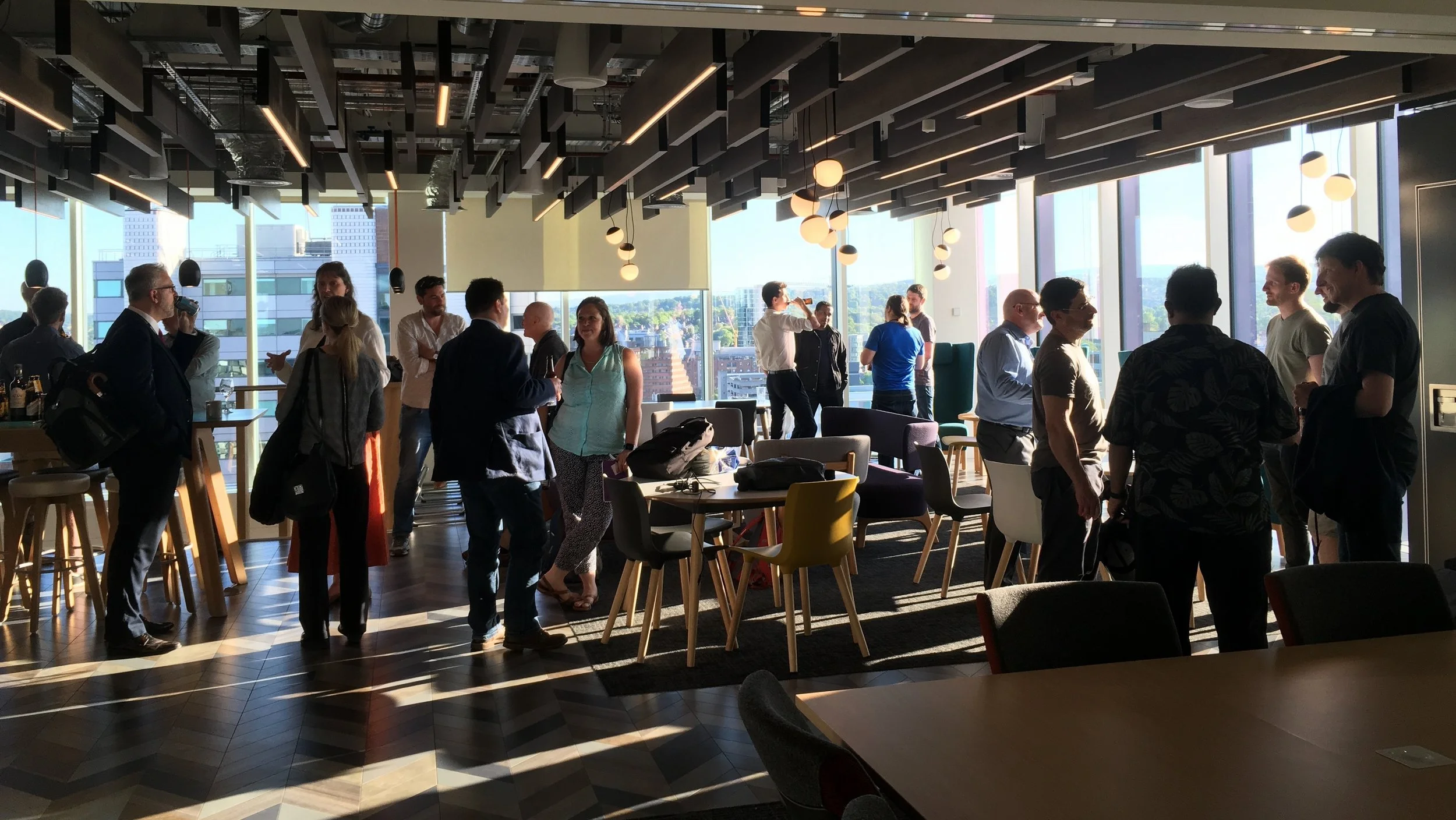Notes from Meetup #9: The Things Network Takeover (Part 2)
Here are the rest of the talks from the March 2018 event…
Dave Mee
MadLab, The Things Network Manchester and Things North
Dave provides the history of Things Network Manchester, and its origins in civic engagement projects MadLab undertook with Manchester City Council several years ago, in which they discovered how difficult it was to implement smart cities - everything proved hard to do, from building and maintaining the technology available at the time to gaining the right permissions to site sensors and network gateways.
This led them to visit the Things Network in Amsterdam to investigate its potential, and discovered how far advanced they were, how many commercial concerns they had addressed, and the potential of the technology stack to be open and build a community around it.
They took this knowledge back to Manchester and set about bootstrapping a network, starting with the infrastructure (establishing the first gateway at Julien’s house in Chorlton).
They then began engaging with people and city organisations to explain what the technology is capable of and build capacity to use it. The first project to emerge from this was the IoT Smoke Detector in conjunction with the Fire Service, which also provided access to the service’s communications towers as sites for new TTN gateways.
The also established a monthly meetup to build the community, extend the message and generate new collaborations, and extended their advocacy around the country, including at the Wuthering Bytes conference in Hebden Bridge in 2017.
Inspired by the work Ben Ward has done with the Oxford Flood Network, and the switch from ZigBee / WiFi backhaul to a Things Network solution, they got involved with Andrew Back in Calderdale and the effort to extend the network across the whole of the UK.
And more recently, they have been working with an industrial partner to monitor noise pollution, and this is another example of a process they have observed where the initial network is established for commercial purposes, as it is a great cable replacement, but there is so much overcapacity on the network it is then very easy to share it with communities and other stakeholders for additional applications and value.
Over the last couple of years, Things Manchester has seen networks begin to proliferate across the North of england, so much so that it is nearly feasible to move freely around the country without ever leaving coverage. This has led them to initiative the Things North initiative to bring these networks together to collaborate and to proactively connect them together.
Visit the Things North website.
Deepayan Bhowmik
Sheffield Hallam University and Things Connected
Deepayan presented Hallam University’s collaboration with the Digital Catapult to set up one of their Things Connected gateways, which is another LoRa implementation but currently incompatible with the Things Network.
The University intends to leverage this network to provide a means for businesses, students and researchers to experiment with new LPWAN applications, using the resources in the computer science department (Deepayan himself specialises in machine vision, signal processing and related cyber security). This includes work on understanding the capabilities of the technology, and potential attacks and exploits.
The hope is that this effort will develop more people who understand and can build applications, who can then take their skills and experience to other networks, including TTN, and that this network provides another option for people looking to experiment with LPWAN technology.
There are also funding pots available via Innovate UK for projects using the network.
Perry Ismangil
Teluu and The Things Network Sheffield
Perry is a software engineer and co-founder of Teluu, who provide an open source software stack for phone call management. He attended the “Build and Deploy” workshop at Wuthering Bytes in 2017, and that was his first exposure to LPWAN technology. However, when he returned to Sheffield he wasn’t able to connect the device he had built to the network as there were no gateways in Sheffield at that time! So he joined the Things Network kickstarter and was one of the lucky recipients of a working gateway in the early batches. He admits the range isn’t great, as it’s sat behind a window in his house at street level, but it provides connectivity for his purposes and has been very useful for learning about the technology, especially with others in the Sheffield Things Network.
In order to really take things forward though, there needs to be more capacity building and collaboration, and he is looking forward to the series of Smart City Hackathons that are being put together in conjunction with Sheffield Hackspace, starting in April.
Visit the Things Network Sheffield community page.
George Taylor
Caudata and The Things Network Sheffield
Caudata use wireless to bring connectivity to places where cables won’t work. They run their own ISP in Sheffield and built point-to-point networks around the country.
George is particularly interested in applications of LoRaWAN in natural habitats, in our national parks and wild spaces. For instance there are just three breeding pairs of Hen Harriers left in England, but the monitoring technologies that are currently in use to protect them are neither reliable nor energy efficient. Caudata has a division that looks at wildlife monitoring and surveillance, and they are working to trial LoRaWAN deployments using the Things Network to improve current efforts.
He further explained that there is a mission to remove hedgehogs from some of the Hebridean Islands, where they are proliferating due to a dearth of predators, and transport them to the mainland. £3.5 has been allocated for this effort, however the process currently involves rangers regularly checking hedgehog traps, at a total cost of around £1000 per animal repatriation. George is hoping to help address this by developing IoT enabled hedgehog traps that can report their occupancy.
Finally, he has also been involved in an effort to measure the degradation of mountain flower habitats around the flanks of Snowdon, caused by an increase ice climbing in the area. This also involved installing a Things Network gateway to relay sensor data over long distances, and resulted in Caudata picking up packets from Snowden in Castleton in the Derbyshire Peaks, measuring a max range of 140km! (Although George reckons the technology is capable of much longer ranges with specialised equipment and higher line-of-sight deployment).
If anyone is interested in use cases like these, get in touch via the Things Network Sheffield community page.
And that was it - 8 really interesting talks covering a wide range of activity and developments in long range IoT technology across the North of England. Huge thanks to Roy Woodhead for arranging the event and to all the speakers who travelled here to talk to us! We look forward to the next Things Network Takeover! :)
Chris & Matt







